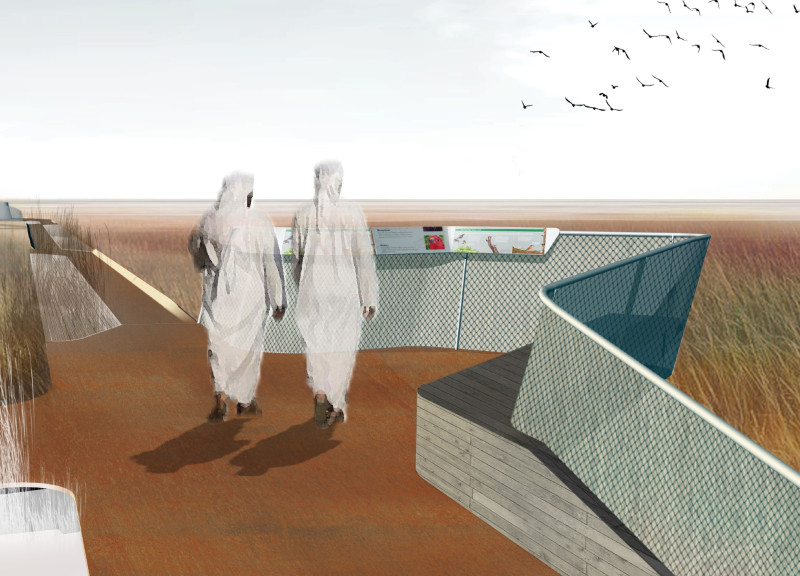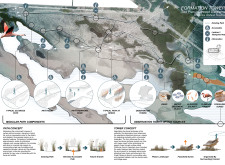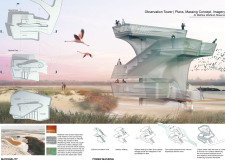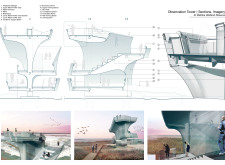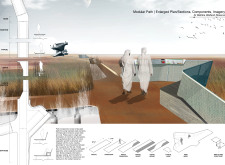5 key facts about this project
The design at Al Wathba Wetland Reserve addresses environmental challenges while promoting accessibility for all visitors. Situated in a fragile ecological landscape, the focus is on a modular elevated walkway that minimizes issues like soil erosion and disruption of plant life. The project emphasizes connection with nature, encouraging interaction through elevated pathways and viewing areas.
Design Concept
Central to the design is the elevated walkway, constructed from prefabricated plate elements that reduce site disruption. This approach offers flexibility, allowing the structure to adapt to the unique landscape of the wetlands. Directional nodes are intentionally placed along the path, guiding visitors while enhancing navigation through the reserve. Viewing platforms invite participants to engage with the wildlife and observe the diverse ecological features of the area.
Observation Tower
The observation tower acts as a key element in this design, providing a vertical counterpoint to the flat terrain of the wetlands. Inspired by nearby fossilized dunes, its form resembles the gentle curves seen in nature. Visitors who ascend the tower gain expansive views of important ecological features. They can see the water treatment plant, which influences the salt levels in the area, supporting various wildlife species.
Material Choices
Careful selection of materials highlights the relationship between the built environment and nature. The design incorporates weathering steel, wood, and copper for their durability and ability to blend with the surroundings. These materials were chosen not just for their strength but also for their capacity to change over time, creating a dialogue with the natural setting. The weathering steel develops a unique patina that integrates the structures into the environment, while wood and copper add an inviting texture.
Visitor Experience
The walkway enhances the visitor experience through the use of grated sections that allow plants to grow, fostering interaction between users and the ecosystem. View Nodes along the path serve as spots for reflection and educational messaging. This design encourages individuals to learn about the significance of the wetlands while enjoying the scenery. The combination of functional elements and thoughtful design creates an immersive environment.
As visitors walk the path, they experience varying textures and patterns created by the interplay of sunlight and shadows through the grating, echoing the complexity of the surrounding ecosystem.


